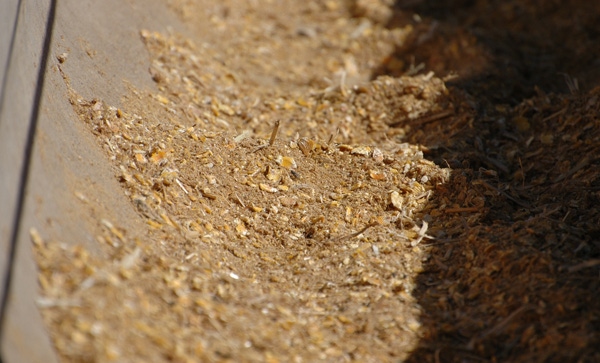November 30, 2015

It’s that time of year when folks are starting to dip into their silage piles and feed cattle. As winter weather kicks in, folks can often get in a hurry to get chores done and get back into the warmth of the house. Taking shortcuts when it comes to feeding silage can hurt the quality of the silage itself and put yourself in an unsafe situation.
There are two considerations for silage management, says Rory Lewandowski, Ohio State University (OSU) Extension educator. According to Lewandowski, these include how to “manage the removal of silage from the silo to maintain silage quality and promote animal intake and the other on how to keep farm workers, family, and visitors safe around the bunker.”
On the management side, it’s important to remember that exposure to air harms the quality of the silage. In a recent column for OSU Beef News, Lewandowski explains, “The reason is that yeast begin to grow in the presence of oxygen and those yeast metabolize the lactic acid that was formed during silage fermentation.”
Meanwhile, there are many safety considerations to keep in mind, including these six from Lewandoski:
Never stand closer to the silage face than three times its height. When a silage avalanche occurs, the silage falls down and runs out away from the silage face.
Do not fill bunker silos higher, or create silage piles higher, than your unloading equipment can reach. These are the situations that most typically create overhangs when removing silage. Generally most unloading equipment can reach 12 to 14 feet above the silage floor.
Follow the ‘buddy’ rule and never work in or near a bunker or pile alone. Suffocation is a major concern in the event of a silage avalanche and the minutes saved in a rescue attempt because of the buddy rule could mean the difference between life and death.
Use proper removal or unloading techniques. Never dig the bucket of a loader into the bottom of the silage. Do not undercut the silage face. Shave the silage from the top down on the silage face and maintain a smooth silage face.
“When collecting a silage sample for quality analysis, do not sample from the silage face. Collect silage in a loader bucket and sample from that loader bucket after it has been moved a safe distance from the silage face.
“Consider posting a warning sign: ‘Danger! Silage Face Might Collapse’ around the perimeter of bunkers and piles.”
Do you feed silage? How do you manage your silage for quality and stay safe in the process? Share your thoughts in the comments section below.
The opinions of Amanda Radke are not necessarily those of beefmagazine.com or Penton Agriculture.
You might also like:
13 new utility tractors for the ranch in 2015
Crunch the numbers before you buy those heifers
5 tips for managing feed intake in calves
What's the secret of a profitable cow? Burke Teichert shares
You May Also Like



